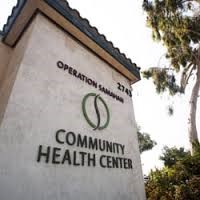- Principal Investigator(s): Elizabeth Reed, ScD, MPH
- Project Funding Period: 10/2013 – 06/2017
- Project Funding Source: National Institute of Child Health and Development
Summary
The Activity Spaces and Spatial Mobility Study aims to assess risk factors for STI and pregnancy among adolescent girls residing in the US-Mexico border region of San Diego County. The primary focus of this study is to assess the role of activity spaces (i.e. locations of social and sexual interaction) and spatial mobility (i.e. movement across geographic locations) on STI risk. In the past decade, there has been increasing interest in the role of geography and how neighborhood-level factors may impact risk for violence and STI. This project aims to expand upon this previous work by examining the dynamic movement of individuals across politically-defined geographic units and the activity spaces outside of the home in which risky sexual behaviors are occurring.
In addition to focusing on the role of activity spaces on STI risk, we are also examining several other social and economic factors that contribute to STI and pregnancy among adolescents. For example, given the expanding number of studies that highlight economic empowerment as critical to improving sexual and reproductive health among women and girls, we assess the unique role of economic vulnerability in girls’ experiences of partner violence, economic reliance on male partners, and subsequent risk for STI and adolescent pregnancy. Given the well-documented impact of partner and sexual violence on increasing risk for STI and pregnancy among girls, the study will also assesses the intersection of violence and STI risk, including a focus on sexual harassment as well as sexual coercion that occurs through online interactions (e.g. coercion to send sexual photos and/or text messages).
Study Design
The project is a case-control study (n=200) among sexually active adolescent girls (age 15-19) residing in San Diego, CA, in neighborhoods near the U.S.-Mexico border. The study includes a focus on the places where girls spend time as well as characteristics of their social networks, family life, and relationships with male partners.
Quantitative Surveys: Participants complete a tablet-based survey aimed to assess a variety of topics including relationships with family and social support, economic vulnerability, substance use, experiences with male sexual partners, experiences with dating violence and gang activity, and experiences with social media and electronic sexual coercion.
STI Testing: Participants are asked to provide a urine sample to be tested for chlamydia and gonorrhea.
Google Earth: On the map, participants mark the 5 places where they spend the most time and answer a set of questions about each place to assess various risks (e.g. safety, sexual activity, substance use, other peer interactions).
Qualitative Interviews: A subset of participants (n=25) identified as high risk (e.g., ever tested positive for an STI, ever been pregnant, experienced dating violence and/or online sexual harassment) are invited to participate in a semi-structured 45-60 minute interview. During the interviews, participants are asked to describe general aspects of their lives, including family relationships, living situation, relationships with male partners and friends. There is also a focus on social media use including types used, who they communicate with and how, their experiences of sexual coercion/harassment via social media, and the specific scenarios and perpetrators of such harassment/coercion.
Contact Information
Marissa Salazar
Doctoral Candidate, SDSU-UCSD Joint Doctoral Program in Global Health
T: (619) 594-0588
E: marissa.m.salazar@gmail.com


